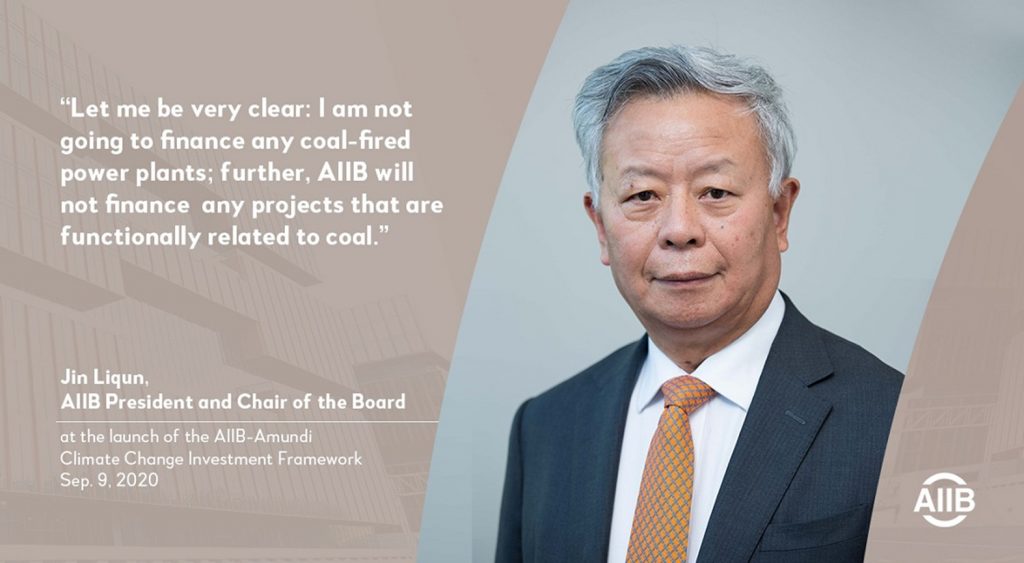Unlocking Private Capital in Bangladesh – Asian Infrastructure Investment Bank (AIIB)

Mobilizing Private Capital for Sustainable Development in Bangladesh
Executive Summary
A consensus from the 10th Annual Meeting of the Asian Infrastructure Investment Bank (AIIB) highlights that unlocking private capital is critical for achieving inclusive and sustainable growth. For Bangladesh, mobilizing private sector financing is no longer optional but essential for bridging its infrastructure gap and meeting its ambitious development targets, including the Sustainable Development Goals (SDGs), national climate commitments, and Vision 2041. This report outlines the necessity of private capital, the strategic framework required to attract it, and the pivotal role of multilateral development banks (MDBs) like the AIIB in this process.
The Development Context and SDG Financing Gap
Economic Progress and Emerging Challenges
Since 1971, Bangladesh has demonstrated robust economic growth and made significant strides in social and infrastructural development. However, recent economic and political challenges have underscored the need for new financing sources. While major public investments like the Padma Bridge show a commitment to development, they also strain public resources. As of 2019, the country faced an infrastructure gap of 1.9%, and with a General Government Debt of 40.3% of GDP, traditional public financing is insufficient to meet development needs. This financing shortfall directly impacts the nation’s ability to achieve its long-term goals.
Aligning with the Sustainable Development Goals (SDGs)
The imperative to mobilize private capital is directly linked to financing the 2030 Agenda for Sustainable Development. The existing infrastructure deficit presents a significant obstacle to progress on several key goals:
- SDG 9 (Industry, Innovation and Infrastructure): The gap in transport, energy, and digital infrastructure limits industrial growth and innovation.
- SDG 11 (Sustainable Cities and Communities): Insufficient funding hampers the development of resilient and sustainable urban environments.
- SDG 7 (Affordable and Clean Energy): The green transition requires massive investment in renewable energy infrastructure.
- SDG 13 (Climate Action): Substantial resources are needed to fund climate adaptation and mitigation projects.
Private investment is crucial to bridge this financing gap, support a green transition, restore investor confidence, and accelerate progress toward these and other related SDGs, such as SDG 8 (Decent Work and Economic Growth).
Framework for Attracting Private Investment for SDG-Aligned Projects
Foundational Pillars for Investor Confidence
To attract meaningful private-sector investment, a foundation of trust must be established. This rests on three essential pillars:
- Stability: A predictable macroeconomic environment is fundamental for long-term investment decisions.
- Predictability: Consistent policies and regulatory frameworks reduce risk for investors.
- Transparency: Clear procurement processes and governance structures enhance investor confidence.
Key Strategic Areas for Action
Ongoing efforts to strengthen the business environment are critical. The following areas are key to translating investment momentum into impactful, long-term projects that support inclusive and resilient growth:
- Restoring Macroeconomic Stability: A stable currency, controlled inflation, and judicious fiscal measures are prerequisites for sustainable investment aligned with SDG 8.
- Developing Domestic Capital Markets: A robust local financial ecosystem is essential for providing long-term financing, reducing overreliance on external borrowing, and supporting SDG 17 (Partnerships for the Goals).
- Strengthening Regulatory Frameworks: Well-structured public-private partnership (PPP) models and blended finance solutions are vital for large-scale projects contributing to SDG 9 and SDG 13.
- Creating a Conducive Business Environment: Improving the ease of doing business and ensuring good governance are critical signals for investors and support SDG 16 (Peace, Justice and Strong Institutions).
The Role of Multilateral Development Banks in Facilitating SDG Investment
The AIIB Mission and Private Capital Mobilization
The AIIB’s mission of “Financing Infrastructure for Tomorrow” is centered on mobilizing private capital for sustainable, resilient, technology-enabled, and inclusive projects. By ensuring projects are robust and bankable, the AIIB builds investor confidence, which is particularly important for emerging economies like Bangladesh. This approach directly supports the financing mechanisms outlined in SDG 17.
AIIB’s Strategic Support for Bangladesh
As a founding member of the AIIB, Bangladesh can leverage this partnership to advance its SDG agenda. The AIIB’s commitment is demonstrated through initiatives like the Climate Policy-Based Financing program, which supports reforms that strengthen climate resilience (SDG 13) and create a more predictable environment for private investors. The AIIB can provide support in several ways:
- Improving the Investment Climate: Through dialogue and technical support, the AIIB helps strengthen the foundations required to attract private capital.
- Bringing Together Public and Private Financing: The AIIB collaborates with global stakeholders to mobilize resources for priority infrastructure and climate-resilient projects aligned with SDG 9 and SDG 13.
- Ensuring Projects Meet Global Benchmarks: The AIIB supports sustainable, climate-friendly projects that follow international best practices, ensuring long-term viability and contribution to the SDGs.
- Providing Customized Solutions: The AIIB works with members to design approaches that reflect specific country priorities and SDG targets.
Conclusion: A Coordinated Strategy for Sustainable Growth
As Bangladesh transitions away from concessional financing, a bold and coordinated action plan is required to unlock private capital. Public resources alone are insufficient to meet the demands of the SDGs. Through a combination of macroeconomic stabilization policies and constructive engagement with development partners like the AIIB, Bangladesh can position itself as a competitive and resilient destination for private investment. This strategic mobilization of private capital will be a gamechanger, driving the next wave of long-term, sustainable growth in line with the nation’s SDG commitments.
Analysis of Sustainable Development Goals in the Article
1. Which SDGs are addressed or connected to the issues highlighted in the article?
- SDG 8: Decent Work and Economic Growth: The article focuses on achieving “robust economic growth” and “inclusive and sustainable growth” for Bangladesh. It discusses the need for macroeconomic stability, including controlled inflation and stable currency, as a foundation for long-term investment and continued economic development.
- SDG 9: Industry, Innovation and Infrastructure: This is a central theme, with the article explicitly mentioning the need to bridge “critical infrastructure gaps.” It highlights transformational projects like the Padma Bridge and AIIB’s mission of “Financing Infrastructure for Tomorrow,” which is described as sustainable, resilient, and inclusive. The article quantifies the issue by citing an “infrastructure gap of 1.9%.”
- SDG 13: Climate Action: The article directly connects financing with climate goals, mentioning Bangladesh’s “national climate commitments” and the need to support a “green transition.” It highlights AIIB’s “Climate Policy-Based Financing program,” which aims to support “climate change adaptation and strengthen mitigation actions” and build “climate resilience.”
- SDG 17: Partnerships for the Goals: The core message of the article is about mobilizing resources through partnerships. It emphasizes “unlocking private capital,” using “public-private partnership models,” promoting “blended finance solutions,” and forming “strategic partnerships with multilateral development banks (MDBs)” like AIIB to achieve development goals.
2. What specific targets under those SDGs can be identified based on the article’s content?
-
Under SDG 8 (Decent Work and Economic Growth):
- Target 8.1: Sustain per capita economic growth in accordance with national circumstances. The article’s discussion of Bangladesh’s “robust economic growth,” its ambition to become the next “Asian Tiger,” and the need for policies to ensure “long-term growth” directly relate to this target.
-
Under SDG 9 (Industry, Innovation and Infrastructure):
- Target 9.1: Develop quality, reliable, sustainable and resilient infrastructure… to support economic development. The article’s focus on bridging the “infrastructure gap,” financing “transformational infrastructure investments,” and AIIB’s support for “sustainable, resilient, technology-enabled and inclusive” infrastructure aligns perfectly with this target.
- Target 9.a: Facilitate sustainable and resilient infrastructure development in developing countries through enhanced financial… support. The role of AIIB as an MDB providing financing, technical support, and customized solutions to Bangladesh for infrastructure projects is a direct example of this target in action.
-
Under SDG 13 (Climate Action):
- Target 13.2: Integrate climate change measures into national policies, strategies and planning. The article mentions AIIB’s program designed to “support policy reforms to mainstream the country’s climate change adaptation and strengthen mitigation actions,” which is a clear implementation of this target.
-
Under SDG 17 (Partnerships for the Goals):
- Target 17.3: Mobilize additional financial resources for developing countries from multiple sources. The central theme of “unlocking private capital” and the statement that “public resources alone are no longer enough” directly address the need to mobilize resources beyond traditional public financing.
- Target 17.17: Encourage and promote effective public, public-private and civil society partnerships. The article explicitly advocates for “well-structured public-private partnership models,” “blended finance solutions,” and “constructive engagement with development partners such as AIIB.”
3. Are there any indicators mentioned or implied in the article that can be used to measure progress towards the identified targets?
- Implied Indicator for Target 8.1: The article mentions “robust economic growth” and a “General Government Debt of 40.3% of GDP.” These figures are related to the official indicator 8.1.1 (Annual growth rate of real GDP per capita) and serve as measures of the country’s macroeconomic health and capacity for sustained growth.
- Implied Indicator for Target 9.1: The article cites a specific “infrastructure gap of 1.9%.” While not an official SDG indicator, this metric is used to quantify the need for investment in infrastructure and can be used to track progress in closing this gap.
- Implied Indicator for Target 13.2: The existence of the “Climate Policy-Based Financing program” and the associated “policy reforms” serve as a qualitative indicator of progress. This aligns with the spirit of indicator 13.2.1, which tracks the number of countries that have integrated climate measures into their national policies.
- Implied Indicator for Target 17.3 & 17.17: The article’s focus on “unlocking private capital” and promoting “public-private partnership models” implies the use of indicators that measure the volume of private investment mobilized for development. This relates to indicator 17.3.1 (Foreign direct investment, official development assistance and South-South cooperation as a proportion of total domestic budget) and indicator 17.17.1 (Amount of United States dollars committed to public-private partnerships for infrastructure).
4. Create a table with three columns titled ‘SDGs, Targets and Indicators” to present the findings from analyzing the article.
| SDGs | Targets | Indicators (Mentioned or Implied) |
|---|---|---|
| SDG 8: Decent Work and Economic Growth | 8.1: Sustain per capita economic growth. | Implied: Measures of macroeconomic stability such as “robust economic growth” and “General Government Debt of 40.3% of GDP.” |
| SDG 9: Industry, Innovation and Infrastructure | 9.1: Develop quality, reliable, sustainable and resilient infrastructure. | Mentioned: “Infrastructure gap of 1.9%.” |
| 9.a: Facilitate sustainable and resilient infrastructure development through enhanced financial support. | Implied: Volume of financing and technical support from Multilateral Development Banks (MDBs) like AIIB for infrastructure projects. | |
| SDG 13: Climate Action | 13.2: Integrate climate change measures into national policies, strategies and planning. | Implied: The existence of programs like the “Climate Policy-Based Financing program” and associated “policy reforms” for climate adaptation and mitigation. |
| SDG 17: Partnerships for the Goals | 17.3: Mobilize additional financial resources for developing countries from multiple sources. | Implied: The amount of “private capital” and “global capital” mobilized for development. |
| 17.17: Encourage and promote effective public, public-private and civil society partnerships. | Implied: The number and value of “public-private partnership models” and “blended finance solutions” implemented. |
Source: aiib.org

What is Your Reaction?
 Like
0
Like
0
 Dislike
0
Dislike
0
 Love
0
Love
0
 Funny
0
Funny
0
 Angry
0
Angry
0
 Sad
0
Sad
0
 Wow
0
Wow
0
















































:focal(1500,1000)/https://media.globalcitizen.org/a6/9a/a69a4720-d8a1-4715-b596-18738d03c05c/rotary_polio_hero_image.jpg?#)







/countries/sri-lanka/photo-credit---dmc-sri-lanka.tmb-1200v.jpg?sfvrsn=dc298bcc_1#)



















